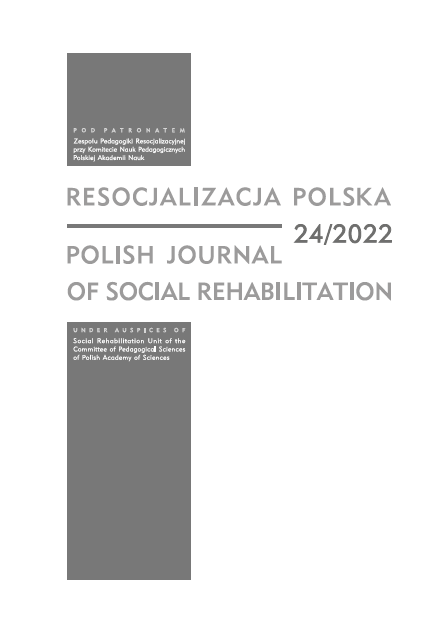Risky Use Scale (RUS) - a screening method for the study of risky use of alcohol and other psychoactive substances Scale characteristics and psychometric properties
Risky Use Scale (RUS) - a screening method for the study of risky use of alcohol and other psychoactive substances Scale characteristics and psychometric properties
Author(s): Robert Modrzyński, Anna Mańkowska, Agnieszka PisarskaSubject(s): Methodology and research technology, Substance abuse and addiction
Published by: Fundacja Pedagogium
Keywords: risky substance use; alcohol; psychoactive substances; ICD-11;
Summary/Abstract: The purpose of this article is to present the psychometric properties of the Risky Use Scale (RUS), used to measure the severity of alcohol and other psychoactive substance use based on the diagnostic criteria of the ICD-1 1 classification. The survey covered 1,062 people, including 592 women and 470 men, with a diverse sociodemographic profile. To verify the accuracy of the RUS, two screening questionnaire tools were used to assess psychoactive substance use: AUDIT (Alcohol Use Disorder Identification Test) and DUDIT (Drug Use Disorder Identification Test). The internal consistency analysis method was used to determine the reliability of the RUS. The study showed high relevance and reliability of the RUS and revealed the univariate nature of the constructed tool. Criterion relevance was calculated by correlating the data obtained in the RUS with the results of the AUDIT (women: r = .92, p < .01; men: r = .89, p < .01) and DUDIT (women: r = .50, p < .01; men: r = .49, p < .01) questionnaires. The coefficients of internal reliability (Cronbach's alpha) for men and women were .94 and .97, respectively, and the inter-rater reliability coefficients (with Spearman-Browne correction) for the RUS scale were: .90 and .95. RUS is a screening tool that can be successfully used in clinical practice. The questionnaire's design allows for accurate and quick assessment of subjects' behavior toward risky use of psychoactive substances. The Scale's properties also allow it to pick up people with suspected addiction syndrome.
Journal: Resocjalizacja Polska
- Issue Year: 24/2022
- Issue No: 1
- Page Range: 353-370
- Page Count: 18
- Language: English

